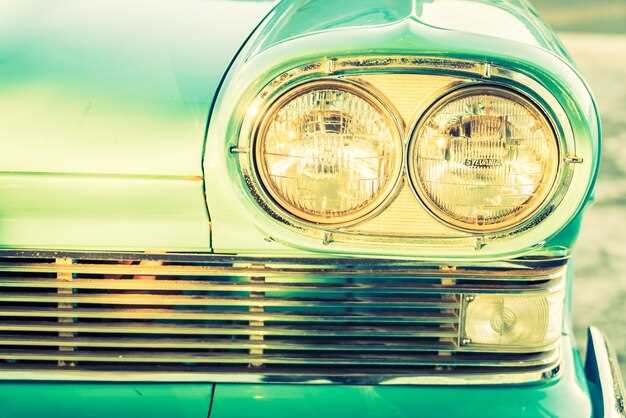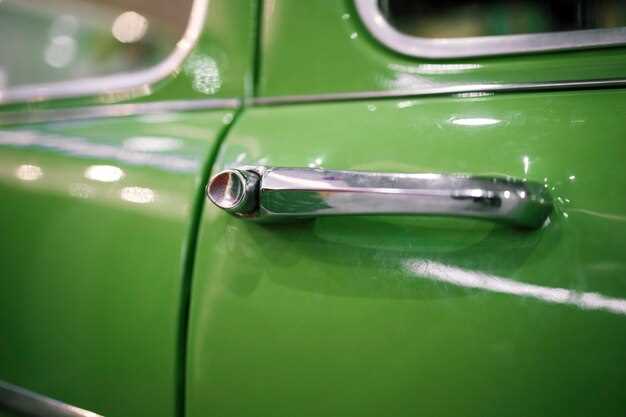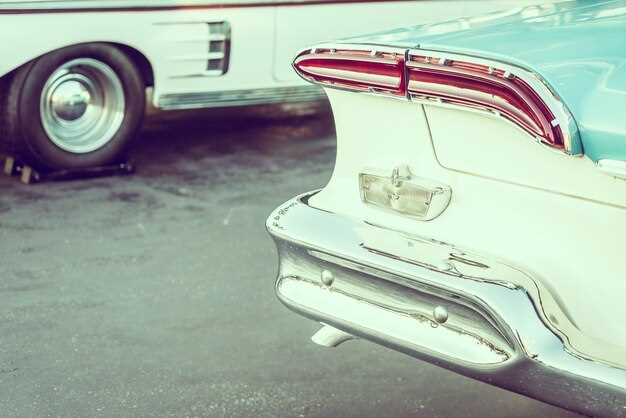
The restoration of vintage Porsche models is not merely about mechanical excellence; it is also a matter of aesthetic refinement. One of the most critical aspects of this process is paint restoration. Over the years, factory finishes can suffer from a variety of issues, including fading, scratches, and oxidation. Understanding how to effectively address these problems is essential for preserving the integrity and value of these classic vehicles.
Effective paint restoration begins with a thorough assessment of the current condition of the vehicle’s exterior. Identifying the type of paint and the extent of any damage is vital before proceeding with restoration techniques. Polishing is often a key component of reviving the shine and clarity of the original finish. Proper polishing can eliminate minor imperfections, enhancing the paint’s luster and depth, while also safeguarding against future wear.
Throughout the restoration process, a combination of techniques such as compound cutting, machine polishing, and sealant application plays a significant role. Each method helps to bring the vintage Porsche back to life, reviving its original beauty and ensuring it stands out on the road. A meticulous approach to these restoration techniques not only elevates the car’s appearance but also honors the legacy of the brand.
Assessing the Original Paint Condition of Vintage Porsches

When evaluating the original paint condition of vintage Porsche models, several key factors must be considered to ensure an accurate assessment. First, understanding the paint type used in specific models is crucial. Classic Porsches typically feature either single-stage or two-stage paint systems, which influence their current state and restoration needs.
Next, check for signs of oxidation, fading, or discoloration. These factors can indicate the extent of wear due to environmental exposure and aging. Carefully examine areas that are prone to wear, such as hoods, fenders, and door edges, for any inconsistencies. Utilize a magnifying glass to inspect paint thickness and texture, as variations may signify previous repairs or touch-ups.
It is also important to check for chipping, scratches, and other forms of damage. Small imperfections might be easily fixed, while extensive chipping or deeper scratches could require a more intensive restoration approach. Look for the original factory paint codes, as they provide essential information for any restoration work needed to match the original color accurately.
Finally, consider the overall integrity of the underlying metal. Rust or corrosion under the paint can compromise the surface’s condition, necessitating prompt attention. This thorough assessment will not only help in determining the immediate restoration needs but will also preserve the vintage charm that defines these iconic Porsches.
Step-by-Step Guide to Polishing Vintage Porsche Paint
Polishing vintage Porsche paint is an essential process to restore the luster and shine of classic models. Follow this step-by-step guide for the best results.
Step 1: Gather Your Materials – Before starting, collect all necessary tools: a dual-action polisher, polishing pads, high-quality automotive polish, microfiber towels, and a clean water bucket.
Step 2: Wash the Surface – Begin by washing the Porsche thoroughly with a pH-balanced car shampoo. This removes any dirt, grime, or contaminants that could interfere with the polishing process. Rinse well and dry with a microfiber towel.
Step 3: Inspect the Paint – Examine the paintwork closely for scratches, swirl marks, or oxidation. Assess the areas needing more attention to determine where to focus your efforts during polishing.
Step 4: Choose the Right Pad and Polish – Select an appropriate polishing pad based on the condition of the paint. For minor imperfections, a soft foam pad with a medium-cut polishing compound will do. For deeper scratches, a more aggressive pad may be necessary.
Step 5: Apply Polish to the Pad – Dispense a moderate amount of polish onto the pad. Use a circular motion to spread it over the pad, which prevents splatter when you start polishing.
Step 6: Start Polishing – Position the polisher on the surface of the Porsche at a low speed. Gradually increase the speed to around 4-5 on the polisher’s settings. Work in sections, overlapping each pass slightly to ensure even coverage.
Step 7: Wipe Off Residue – After polishing a section, use a clean microfiber towel to wipe off any excess polish. Check for clarity and gloss before moving to the next section.
Step 8: Assess and Repeat if Necessary – After polishing the entire vehicle, assess the paint. If imperfections remain, repeat the polishing process with a finer pad or polish to achieve your desired result.
Step 9: Finish with a Wax or Sealant – Once satisfied, apply a high-quality wax or sealant to protect the polished surface. This adds additional gloss and shields the paint from environmental elements.
Step 10: Regular Maintenance – To keep the Porsche paint looking pristine, perform regular maintenance washes and apply a protective layer every few months. This ensures long-lasting shine and protection.
Choosing the Right Products for Paint Touch-Ups on Classic Porsche Models

Choosing the right products for paint touch-ups on classic Porsche models is essential to maintain the vehicle’s aesthetic and value. Using appropriate materials ensures that the car retains its original charm and integrity while providing lasting protection. Here are key considerations and recommendations for selecting the right products:
- Color Matching:
Finding the exact color match is critical. Vintage Porsches often have specific paint codes.
- Check the original paint code, usually found on the identification plate or in the owner’s manual.
- Consider purchasing paint from reputable suppliers specializing in classic car restorations to ensure authenticity.
- Paint Type:
Different paint types come with unique properties:
- Acrylic Enamel: Durable and easy to apply. Great for touch-ups.
- Urethane: Known for its exceptional gloss and durability. Provides a robust finish.
- Single-stage Paints: Quick-drying and suitable for small touch-ups, ensuring brighter finishes.
- Polishing Products:
After applying touch-up paint, polishing is vital to achieve a seamless blend with the original finish.
- Choose a microfiber cloth to avoid scratching the surface.
- Select a polish that is safe for car paints, such as an automotive-grade polish, ensuring it won’t damage the finish.
- Use a dual-action polisher for larger areas to achieve an even finish.
- Clear Coat:
A clear coat protects the newly applied paint and enhances shine.
- Consider a spray can clear coat for ease of application.
- Make sure it is compatible with the type of paint used for the touch-up.
- Tools and Accessories:
Specialized tools can improve the touch-up process:
- Fine-tip brush or paint pen for precise applications.
- Paint mixing cups for properly blending colors.
- Sandpaper or polishing pads for smoothing out imperfections.
Selecting the right products for touch-ups can significantly affect the appearance and lifespan of classic Porsche models. Stick to high-quality materials and carefully follow the application instructions for optimal results.
 Skip to content
Skip to content





